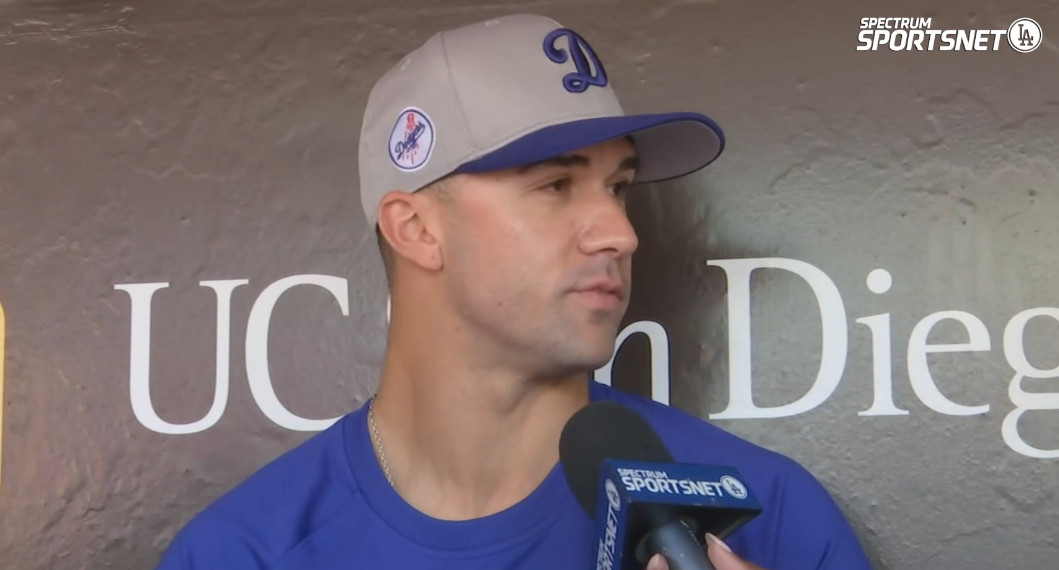Starting pitcher Jack Flaherty, whom the Dodgers acquired from the Tigers just before Tuesday’s trade deadline, is considered by many to be the best starter moved at the deadline. His sparkling 2.95 ERA and 133 strikeouts in 106.2 innings certainly weaves a narrative of dominance, and his 3.12 FIP and 27.5 K-BB% reinforces that preliminary analysis.
While Flaherty will undoubtedly boost a Dodgers rotation that has been mired in a general state of ineffectiveness since the beginning of July, he does not come free of his own concerns, regarding both his health and projected effectiveness over the next two months leading into the postseason and his free agency.
As the industry reacted to Flaherty’s buzzer-beater move to LA, reports surfaced from The Athletic about injections that Flaherty received in his back during a span of three weeks after missing a start to begin July.
Once the Yankees backed out of their agreement on Flaherty with the Tigers, word spread throughout the industry, and other teams became aware of New York’s concerns. But only the Yankees and Dodgers reviewed Flaherty’s medicals, a process that generally begins only after a trade agreement is in place.
However, Flaherty has insisted to the LA Times that his back feels healthy.
Flaherty didn’t comment on that report on Wednesday, but insisted that “all I know is I feel great.”
“I’ve felt great since we got back from the [All-Star] break, or even right before that,” added Flaherty, who dealt with his most recent back flare-up in early July.
Dave Roberts, the Dodgers training staff, and even Brian Cashman have also downplayed the severity of the situation.
“I’m very comfortable,” echoed Roberts. “Training staff says he looks great and feels good.”
Yankees general manager Brian Cashman also seemed to minimize concerns about Flaherty’s health Wednesday, telling SNY that, “at the end of the day, I would have brought Jack Flaherty in if I could have matched up [with the Tigers on a trade].”
On the surface, all that appears to be true, as since the injections Flaherty has posted a 1.53 ERA along with a 9.17 K/9, 2.55 BB/9, and 1.02 HR/9, inarguable signs of effective run prevention. Flaherty’s underlying numbers over the span, though, suggest a little bit of a good luck, as his 3.45 FIP in July is nearly 2 runs above his ERA, and his BABIP of .146 and LOB% of 88.2 both also suggest good luck. However, these underlying numbers do not appear particularly concerning, as Flaherty’s July FIP is not significantly above his season FIP, and some of that batted ball luck demonstrated in his July BABIP and LOB% are likely due for this discrepancy. Moreover, Flaherty faced Cleveland twice in July, who hold one of the best records in baseball and strikeout the fourth-least in baseball as a lineup, which may account for slightly less dominance in the month.
Overall, Flaherty has averaged over 5.2 IP this span and largely prevented runs without any reason to think he will fail to continue to do so as a result of any sort of back injury, so the concern level in terms of short-term in jury risk here appears to be minimal aside from risk associated with every pitcher.
The other concern present in the industry regarding Flaherty centers around his fastball velocity. Last year, when Flaherty pitched well in St. Louis and was dealt to the Orioles, he failed to pitch well down the stretch, posting a 6.75 ERA and 4.84 FIP in seven starts with Baltimore. On the podcast Rates And Barrels from The Athletic network, journalist Eno Sarris links this dip in effectiveness to the dip in Flaherty’s fastball velocity over the course of the season, noting how his statistics grew significantly worse in correlation with this drop in velocity. In his article on it, he singles out 94 mph as the benchmark to watch.
“Flaherty has allowed a .349 slugging and 27.2 percent whiff rate when he throws 94 mph or harder. Those numbers change to a .460 slugging and 18.5 percent whiff rate when the fastball drops under 94. That’s stark.”
Naturally, the velocity trend raises some concerns about Flaherty as this season progresses into August and September. However, Flaherty’s average fastball velocity through the end of May was 93.4, and his average fastball velocity since was 93.1, indicating that Flaherty has relatively maintained his velocity through the 2024 season. In a smaller sample size, his velocity has actually ticked back up in the month of July after the back injections to 93.4 mph — up from the season low of 92.9 in June — which seems to lend credibility to the treatment solving whatever was ailing him. While this lack of a significant velocity dip certainly doesn’t rule out the possibility of one as the season marches on — and it’s worth monitoring as a potential tipping point — significant concern about Flaherty’s velocity appears, as of now, unwarranted as well.
——
Jack Flaherty has pitched like an ace this season for the Detroit Tigers and enters the Dodgers rotation at a time of great need. Flaherty, known to be a fierce competitor and beloved teammate, has a chance to make an impact that defies quantifying on his hometown team it seeks to avenge its playoff misery of recent years. Regardless of various question marks, there is little in Jack Flaherty’s makeup and performance this year that suggests he is not capable of doing so.
 Dodgers Digest Los Angeles Dodgers Baseball Blog
Dodgers Digest Los Angeles Dodgers Baseball Blog
